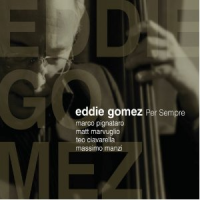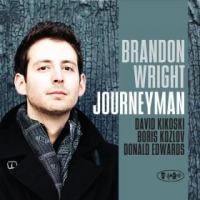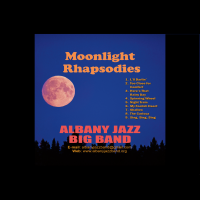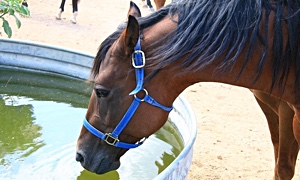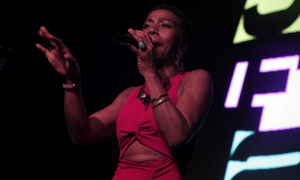Home » Jazz Articles » The Mort Report » Ornette Coleman and Don Cherry Once Blew Us Away Under L...
Ornette Coleman and Don Cherry Once Blew Us Away Under LA’s Big Top
The word got around that there was a session up at so-n-so's pad, and different cats would fall by and it just kept going. Different cats came and went—oh, yeah! (Damn, I'm starting to sound like Mezz Mezzrow; Google him ... then forget him ... sorry, Mezz!) Back to the beer bars (another good name for a motion picture): One played for free. I remember waiting around with say another horn man or two, and maybe a bassist (they always seemed to have a gig somewhere), waiting to see who would show up. In that scenario, hopefully a drummer & pianist—dig? In these places is where one learned to blow!
To this day, I remember the very first tune that I felt comfortable with—that is, I could play the head and blow through the changes. (No one ever brought music or music books to a session; hell, there weren't any.) The name of the tune was/is: "There Will Never Be Another You," in E/flat-concert. One always calls out the keys "in concert." I learned it and many other of the good tunes that all the cats were playing—most of which are now in the aptly named Great American Songbook—at a place on South Western Avenue called Tap City, which meant broke, as in no money. (I recorded it on my first album, with Joey DeFrancesco —also aptly named: Mort Weiss meets Joey DeFrancesco—but that's another story.)
As I recall all of these things, and the many sessions I've outlined here, it comes to mind that you—the reader—should know and understand that these events were not by any means wild, raucous parties where you tried to score a chick and get drunk and fight, etc. (I'll write about that when we get into my rock 'n' roll days; see the "Wild Boy" YouTube I posted in the comments section of my Elvis article.) No, these were about learning and picking up on what other cats were laying down at the time. In fact, if a cat in any way would not be in a hip mind frame, other cats wouldn't even play with him. Yes, there was a pecking order in a big city like LA and other major cities at the time. If you were from out of town and you weren't known and somehow made it onto the stand, you had no say on what tunes that were going to be called—or in what keys and/or tempos. If you were crazy enough to grab the break and take the first chorus, man, you better have had something to say. All the above also applies to how many choruses you took.
I remember when I stated going to sessions. I was 15 years of age, and it was 1950-ish. Looking back, I had big ones: I'd walk up to one of the older cats who seemed to be in charge (they were all older cats) and I'd ask if I could sit in—and the cat would look at me and kind of hesitate. He would look at the case I was carrying and say: "What's that?," and when I said "a clarinet," the cat always said: "Hey, man, why don't you come back tomorrow? There's all these other cats that were here before you, etc." Well, after this happened over and over again at different clubs, I finally got it. So I started going back to the clubs, taking out my horn in the parking lot and or men's room and putting it together (always in the back of the club), and when they finished a tune I'd be in the hallway in back of the stand, and I'd just start playing my ass off! Bird licks, obligatos, crazy insane runs and lines—as loud as I could. A hush would fall over the whole room out front. (I'm getting goose pimples writing about this.) This one time, it was a big black cat and I remember this very, very well. He yelled: Who the fuck was that!? I said, "me." And he said: "Well, get your ass up here on the stand!" Looking back at this pivotal point in my life, that fellow grabbed me, aimed me and started me on a journey.
There many other places where we would play. One I remember was named the Red Feather. Bird allegedly played there on his ill-fated trip to the coast in the 1940s, before he went to Camarillo to "relax." This is where I met Charlie Shoemake, a pianist at the time, and Charles Lloyd—who had come out west to attend the USC dental school. (He quickly changed his major to music. I'm sure his parents were thrilled.) Another unique place was the Waldorf Cellar, eight steps down at Fifth and Main Street in the heart of LA's skid row. It was a gay bar, and they offered us musicians a place to play and to do our thing—as the customers played and did their thing. Cool!
But the one place I remember most was called the Big Top, owned by a guy named Earl Bruce. (Man, if you're out there, please get in touch with me!) The Big Top was located in Hollywood on Sunset Boulevard, two blocks east of Western Avenue next to the Columbia Studios lot. It had a small stage, and a reasonably tuned piano. I started going there when I was 17 and when I was drafted and in the Army (1954-56) other guys would be dreaming about their girlfriends and things back home. Me? I'd be dreaming about the Big Top, and blowing with some ass-kicking rhythm section. And if and when I got to come home for a couple of days, that's where you would find me. The Big Top attracted the very best of the young lions of the day, and the older more experienced cats. One never knew who would come through those doors. I played with way too many cats to list here, including one great night when I got to play a set with Dexter Gordon. Oh, yeah!
I wanted you to get a feel for the place, the people and the mood that prevailed among us cats—the jazz musicians of that day who were hanging and/or blowing. It was the Creme de la Creme of the Cool! I saw my first Playboy magazine there, with Janet Pilgrim as the centerfold. Saw the first Mad comic there, too. There was an air of "hey, we're here to play and learn and to talk to like-minded people—and to pay homage to Bird, Diz, Bud, Max, et al." Bruce, the club owner, was a car buff and had one of the very first gull-wing Mercedes in town. He hung with a lot of car people. Occasionally, the legendary Von Dutch—the auto and bike pin-striping cat—would come in with his friend Steve McQueen, who was then just a young cat trying to make it in Tinsel Town. (For those of you in Walla Walla, he did!) A nice, quiet, laid-back cat. The Dutch played flute and would sit in for a couple of tunes. Man, I mean, this place was a Jack Kerouac birthday cake, dig?
Then this one night, at about 10 p.m. some time in 1957 at the Big Top, I was on the stand. It faced the bar, and the In and Out doors were to my left, facing Sunset Boulevard. We were playing some standard, and I noticed two black cats coming in. The one cat was carrying a white alto sax, out of the case. I didn't know it was plastic, at the time. It became one of Ornette Coleman's trademarks, that horn. But, back then, no one there knew these cats—and they asked if they could sit in. The other cat played cornet. They waited until the next set to play, as one did. At this point, I can't tell you if I was on the stand or sitting out for the set that Ornette and his friend played. By this time most of us had said hello to him and his friend ... Don Cherry. I remember the set starting and the first tune—though I don't remember the name. Everyone played the head OK and then the solos started: Ornette grabbed the break and the first chorus. To this day, I can hear the sounds that were coming out of Ornette's horn. The pianist, who was comping, turned half way around on the bench—just to see what the fuck was going on. Cats started looking nervously at each other, and I could see that something horrible was about to happen—and it did! The worst possible thing you could do to a cat in those days—and I only saw it happen once afterwards—was to walk off the stand while he's blowing. One by one, guys started leaving the stand as Ornette was playing. Finally, there wasn't any one left on the stand ... except Ornette Coleman and Don Cherry.
Ornette, of course, went on to become a musical icon, a living legend who arguably changed the face of jazz—just as much as Bird and Trane did. Ornette's first album, Something Else!!!! (that name sounds familiar), came out in 1958 and he became the darling of pseudo-hipsters and many prominent people breathing the rarefied air of the upper financial and social strata. People like Leonard Bernstein loved Ornette and convinced his minions to come up with funding and endowments for this wunderkind playing out all his heartbreak and oppression on that white plastic horn. The cat even won a Pulitzer! I wonder if he could have passed Wynton's citizenship test?
I'll leave you with two quotes from two cats that one would think were kind of hip about these things: Miles Davis famously declared that Coleman "was all screwed up inside." Roy Eldridge said "I listened to him all kind of ways. I listened to him high—and listened to him stone-cold sober. I even played with him. I think he's jiving, baby."
Well, there you have it. What does it mean in the great scheme of things? Not much. What did the cat say to the chick as the airplane's motors were warming up, getting ready to take off in a zero-visibility fog? Something about a hill of beans. You know, the object of any artist (and I remember when that word meant something) is to tell a story—to convey a message, either to lift one's spirits or to find the beauty in a tragedy, but to make the statement with all the clarity of thought and vigor that said artist possesses. Who's to criticize? To me, a paid critic is a non sequitur. No one can tell me what to like, or what I should like. What a dumb concept. A critic should direct one to something of what they conceive of as worth and any observations and or remarks made by same should be prefaced by many IMOs.
This column is shared with our good friends at Something Else Reviews—where you can also find daily jazz, progressive rock and classic rock reviews.
Tags
PREVIOUS / NEXT
Support All About Jazz
 All About Jazz has been a pillar of jazz since 1995, championing it as an art form and, more importantly, supporting the musicians who make it. Our enduring commitment has made "AAJ" one of the most culturally important websites of its kind, read by hundreds of thousands of fans, musicians and industry figures every month.
All About Jazz has been a pillar of jazz since 1995, championing it as an art form and, more importantly, supporting the musicians who make it. Our enduring commitment has made "AAJ" one of the most culturally important websites of its kind, read by hundreds of thousands of fans, musicians and industry figures every month.



